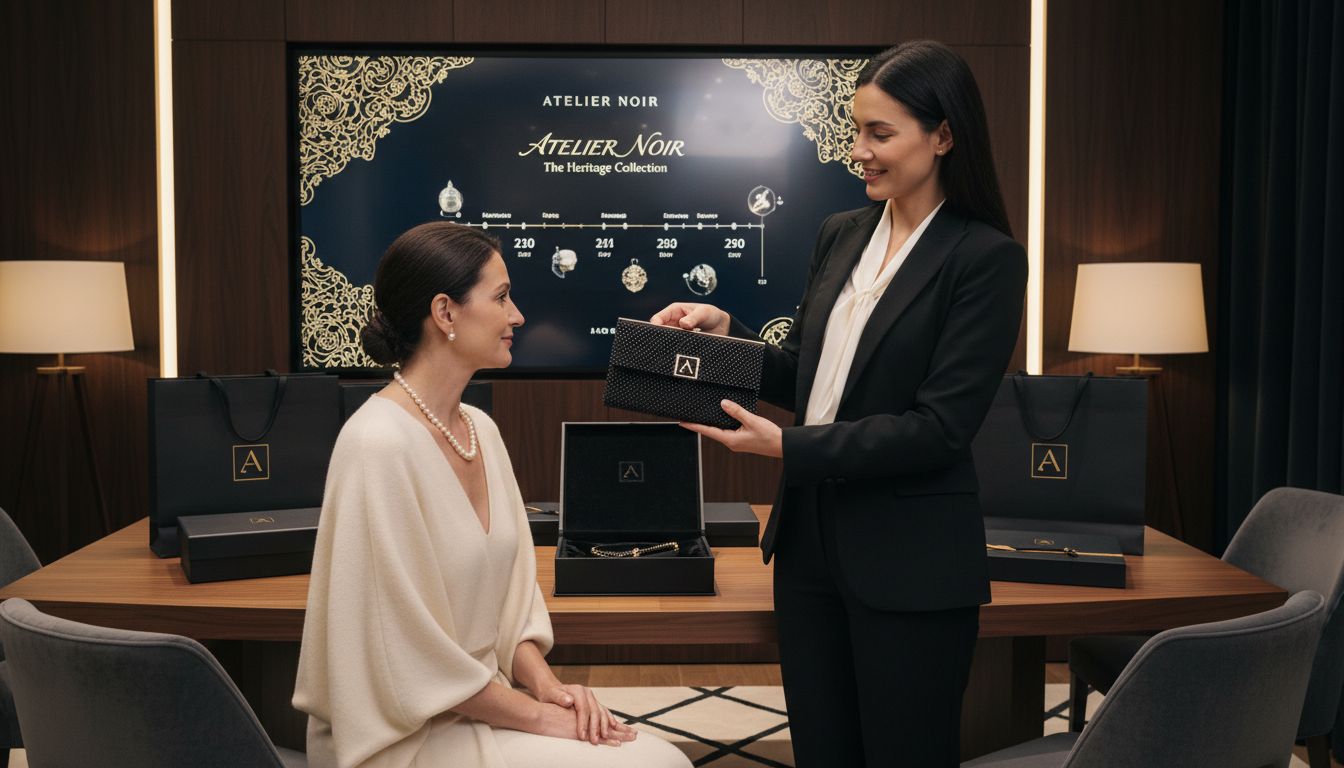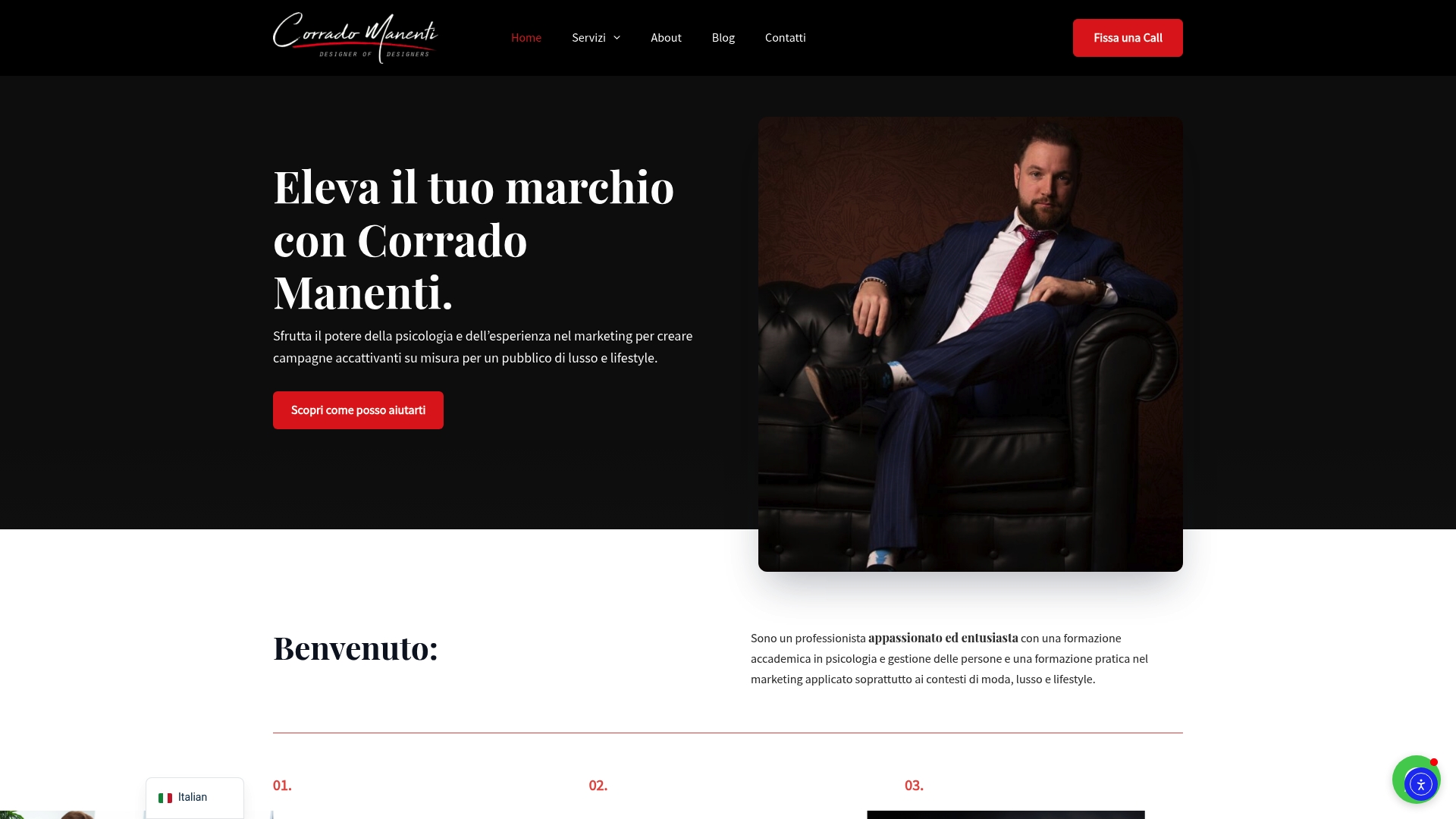Did you know that the global luxury market is expected to reach over $1.5 trillion by 2025? This explosive growth shows just how powerful and complex luxury branding has become. For brands aiming to stand out, mastering luxury branding is about much more than high price tags. Authentic luxury brands build lasting emotional connections, blending exclusivity with extraordinary experiences that customers crave.
Table of Contents
- Defining Luxury Branding Strategies And Myths
- Major Types Of Luxury Branding Strategies
- Key Characteristics Of Each Strategy
- Real-World Applications In Luxury Markets
- Common Pitfalls And How To Avoid Them
Key Takeaways
| Point | Details |
|---|---|
| Understanding Luxury Branding | Luxury branding goes beyond product positioning, emphasizing exclusivity, heritage, and emotional connections with discerning consumers. |
| Core Strategies | Successful luxury brands leverage premium positioning, niche marketing, supply control, brand heritage preservation, and counterfeit protection to maintain distinct market identities. |
| Real-World Application | Effective luxury branding combines strategic insights with emotional intelligence to create impactful consumer experiences and narratives. |
| Avoiding Pitfalls | To maintain luxury brand integrity, avoid overexposure by managing market visibility and adapt to changing consumer preferences through innovation. |
Defining Luxury Branding Strategies and Myths
Luxury branding represents a sophisticated approach to marketing that transcends traditional product positioning. Understanding the essence of luxury branding requires recognizing it as a nuanced discipline focused on creating exceptional perceived value and emotional connections with high-end consumers. Unlike conventional marketing strategies, luxury branding centers on cultivating an aura of exclusivity, heritage, and unparalleled quality.
According to research from the University of Southampton, luxury branding fundamentally involves differentiating products through unique brand identities that emphasize critical elements like craftsmanship, historical significance, and scarcity. These strategies aim to sustain brand equity in increasingly competitive global markets. Key approaches include meticulously controlling brand narrative, limiting product availability, and delivering extraordinary customer experiences that reinforce the brand’s premium positioning.
Common myths surrounding luxury branding often misrepresent its strategic complexity. Many mistakenly believe luxury marketing is simply about high prices or ostentatious displays of wealth. In reality, true luxury branding is a delicate art of storytelling, emotional resonance, and precision. Successful luxury brands invest deeply in understanding consumer psychology, creating immersive experiences that go far beyond transactional relationships. They craft narratives that transform products into symbols of aspiration, personal identity, and cultural significance.

The most effective luxury branding strategies recognize that consumers are not purchasing mere objects, but investing in carefully curated experiences and emotional connections. By consistently delivering exceptional quality, maintaining rigorous brand standards, and creating immersive storytelling, luxury brands transform ordinary products into extraordinary expressions of personal style and cultural sophistication.
Major Types of Luxury Branding Strategies
Luxury branding strategies represent a sophisticated approach to market positioning that goes far beyond traditional marketing techniques. According to research from the Glion Institute of Higher Education, understanding brand differentiation in luxury markets requires recognizing several key strategic approaches that define premium brand positioning. These strategies are meticulously designed to create unique market identities, control brand perception, and establish extraordinary value propositions that transcend conventional product marketing.
The primary types of luxury branding strategies include several nuanced approaches. First, premium brand positioning involves creating an elevated perception of value through carefully curated brand narratives and exceptional quality standards. Second, niche marketing allows luxury brands to target specific high-value consumer segments with precisely tailored experiences. Third, supply control emerges as a critical strategy, where brands deliberately limit product availability through limited editions and exclusive collections, thereby enhancing desirability and perceived rarity.
Additional strategic approaches involve sophisticated brand management techniques. Brand heritage preservation becomes a crucial element, where brands leverage their historical significance and cultural legacy to create emotional connections with consumers. Counterfeit brand protection represents another critical strategy, ensuring the integrity and exclusivity of luxury products by implementing rigorous authentication and legal protection mechanisms. These strategies collectively work to maintain the brand’s premium positioning and protect its intrinsic value.
Here’s a comparison of the major luxury branding strategies and their distinctive features:
| Strategy | Key Characteristics | Primary Value to Brand |
|---|---|---|
| Premium Brand Positioning | Elevated perceptions Exceptional quality Crafted storytelling |
Justifies exclusive pricing Builds brand prestige |
| Niche Marketing | Targeted segments Personalized experience Unique value proposition |
Appeals to select clientele Fosters brand loyalty |
| Supply Control | Deliberate scarcity Limited editions Exclusive availability |
Increases perceived rarity Enhances desirability |
| Brand Heritage Preservation | Leverages history Cultural legacy Emotional connection |
Deepens brand meaning Builds trust and authenticity |
| Counterfeit Brand Protection | Rigorous authentication Legal protection Integrity assurance |
Maintains exclusivity Protects reputation |
Ultimately, successful luxury branding transcends mere product marketing. By creating immersive experiences, maintaining strict quality control, and crafting compelling narratives that resonate with discerning consumers, luxury brands transform themselves from simple product providers into cultural icons. The most effective strategies recognize that luxury is not just about what a product is, but about the extraordinary story, emotion, and experience it represents.
Key Characteristics of Each Strategy
Luxury branding strategies are distinguished by their unique and sophisticated approach to market engagement. Understanding luxury branding best practices reveals a nuanced framework of strategic characteristics that elevate brands beyond conventional marketing. Each strategy possesses distinctive features that contribute to creating an exceptional brand narrative and consumer experience.
The first strategy, premium brand positioning, is characterized by an unwavering commitment to perceived value and exceptional product features. Key characteristics include:
- Meticulously crafted brand storytelling
- Exceptional product quality and design
- Precise attention to craftsmanship and detail
- Pricing strategies that reflect intrinsic value rather than mere cost
In contrast, niche marketing focuses on highly targeted consumer segments with specific characteristics. Its key attributes involve:
- Hyper-specialized product development
- Intimate understanding of specific consumer psychographics
- Personalized communication strategies
- Creating unique value propositions for distinct market segments
Strategies like supply control and brand heritage preservation represent more complex approaches to luxury branding. Supply control is distinguished by deliberate scarcity creation, limited production runs, and exclusive distribution channels. Brand heritage preservation emphasizes historical significance, cultural legacy, and emotional connection. These strategies work synergistically to maintain brand mystique, protect brand integrity, and create extraordinary consumer experiences that transcend traditional product offerings. The most successful luxury brands understand that their value lies not just in what they sell, but in the immersive narrative and emotional resonance they create with their discerning clientele.
Real-World Applications in Luxury Markets
Luxury branding strategies transform from theoretical concepts to powerful market mechanisms when implemented by sophisticated brands. Exploring powerful luxury sector marketing examples reveals how top-tier brands leverage strategic approaches to create remarkable market positioning. These real-world applications demonstrate the intricate art of translating sophisticated branding strategies into tangible market success.
One prominent application is strategic co-branding, where luxury brands collaborate to expand market reach while maintaining exclusive appeal. According to research from Lancaster University, co-branding allows brands to create unique products that attract broader audiences without compromising core brand values. This approach enables luxury brands to:
- Leverage complementary brand strengths
- Access new consumer segments
- Create limited edition collaborative collections
- Generate significant media and consumer interest
Another sophisticated real-world strategy involves comprehensive consumer analysis. Drawing insights from research on Balenciaga’s marketing approach, luxury brands meticulously analyze four critical dimensions: consumer needs, cost considerations, communication strategies, and convenience factors. This multidimensional approach allows brands to craft precisely targeted experiences that resonate deeply with their specific consumer segments. Successful implementation requires understanding not just what consumers want, but the nuanced psychological drivers behind their luxury purchasing decisions.
Ultimately, real-world luxury branding transcends traditional marketing. The most successful brands create immersive narratives that transform products from mere objects into powerful symbols of personal identity, cultural significance, and extraordinary experience. By combining strategic insight, emotional intelligence, and meticulous execution, luxury brands convert abstract branding strategies into compelling market realities that captivate discerning global consumers.
Common Pitfalls and How to Avoid Them
Navigating the complex landscape of luxury branding requires extraordinary precision and strategic awareness. Understanding the role of culture in luxury marketing reveals critical insights into avoiding potentially catastrophic brand positioning mistakes that can rapidly erode years of carefully constructed market perception.
One of the most significant brand dilution risks involves overexposure. According to research from the Glion Institute of Higher Education, luxury brands must meticulously control their market visibility to maintain exclusivity. Potential pitfalls include:
- Mass-market product distribution
- Excessive discounting
- Compromising quality standards
- Losing distinctive brand narrative
Another critical challenge is market adaptability. Luxury brands that fail to innovate risk becoming irrelevant in rapidly evolving consumer landscapes. Strategic approaches to avoiding stagnation involve:
- Continuous consumer preference monitoring
- Agile product development processes
- Embracing technological innovations
- Maintaining brand heritage while introducing contemporary elements
Successful luxury brands understand that avoiding pitfalls is not about rigid preservation, but dynamic evolution. They create flexible strategies that honor their core identity while remaining responsive to changing market dynamics. By maintaining a delicate balance between tradition and innovation, luxury brands can navigate potential challenges and continue to captivate discerning global consumers with their unique value propositions.
Elevate Your Luxury Brand with Psychology-Driven Marketing
Mastering the types of luxury branding strategies is a vital step toward building a brand that truly resonates with your discerning customers. This article highlights how controlling scarcity, preserving brand heritage, and crafting immersive narratives are key tactics. Yet you may find these strategies challenging to translate into authentic consumer connections that drive loyalty and premium pricing. The pain points of market dilution, inconsistent storytelling, or stagnation are real obstacles for anyone striving to achieve luxury brand excellence.
At Corrado Manenti, we understand the psychological forces behind luxury purchases and elevate your brand beyond just products. Our services combine meticulous attention to detail with innovative digital approaches tailored specifically for the fashion and luxury sectors. We help clients build compelling brand narratives and experiential marketing that emotionally engage consumers while protecting exclusivity and prestige.

Are you ready to transform your luxury brand strategy into powerful market success? Visit Corrado Manenti today to access expert consulting that integrates psychology and marketing with proven fashion luxury insights. Learn how to implement sustainable supply control, maintain your brand heritage, and innovate confidently for lasting relevance. Start elevating your brand identity now with our specialized guidance and unlock your full potential.
Frequently Asked Questions
What are the main types of luxury branding strategies?
The main types of luxury branding strategies include premium brand positioning, niche marketing, supply control, brand heritage preservation, and counterfeit brand protection. Each strategy offers distinct features that contribute to creating exceptional brand narratives and consumer experiences.
How does premium brand positioning enhance a luxury brand’s value?
Premium brand positioning enhances value by creating elevated perceptions through meticulously crafted storytelling, exceptional quality, and attention to craftsmanship. This strategy justifies exclusive pricing and builds brand prestige, emphasizing intrinsic value over mere cost.
What role does supply control play in luxury branding?
Supply control plays a crucial role by creating deliberate scarcity through limited editions and exclusive availability. This strategy increases perceived rarity and enhances desirability, ultimately reinforcing the luxury brand’s premium positioning in the market.
Why is brand heritage preservation important for luxury brands?
Brand heritage preservation is important as it leverages a brand’s historical significance and cultural legacy. This strategy deepens emotional connections with consumers, builds trust and authenticity, and reinforces the brand’s overall narrative in a competitive market.



